Documentation 4: Group Project
The text Introduction to Physical Computing, defined interaction as the “cyclic process in which two actors alternately listen, think, and speak” (Introduction to Physical Computing). After reading the required readings from week 1 to week 3, my personal definition of interaction would be the an action involving two or more objects or people that have an effect upon one another, usually creating an exchange that will stimulate an increased sensory factory.
The first project that I chose that aligned with my definition of interaction would be the project on Expressive Tactile Controls. I strongly believe that this project full of buttons, sliders, switches demonstrates my definition of interaction. Created by Hayeon Hwang, he interactive design process involved buttons or sensors that would react with personality traits. The sensor that is “timid” would hide from any approaching user once it senses an incoming touch and the button that is impatient would force itself upon the user to be pushed some more as it is “impatient” (Creative Applications Network).
This project specifically aligns with my definition of interaction because both are independent of one another, yet they are able to react to each other and increase the sensation of touch. The project that did not align with my definition of interaction was the “Fashion Photos Reveal the Intimate Beauty of Laundry Day” (Vice News). The stylist Dominick Barcelona and Photographer Danny Lim teamed up to explore self care routines through a visual representation. The photos depicted the people interacting with the laundry baskets and cleaning products but I did not feel that it was a properly represented interaction as the laundry products did not interact back with the people. It was an interesting form of expression but the project did not accurately represent interaction. This projected showed me that my definition of interaction would have to involve a bounce back reaction on both objects for there to truly be a reaction.
My group focused on was an interactive display that would be projected from an ipad or device in the year of 2119. Blindness is an issue that will continue throughout generations and into the future, however, we wanted to create a device that would allow blind children to interact with braille letters with different textures. Growing up, I would only see braille letters in the form of metal on elevator buttons or the outsides of metro stations. I wanted to create a device that would not only teach the Braille language to young children, but also allowing them to interact with the words that have different textures written in Braille. The child would speak to the device, telling it the phrases that he or she would like to learn. If the child would like to learn how to read “water”, the device would respond by projecting the word “water” in braille with the texture of water. This would be a completely different experience for the child to learn how to read, write, and feel different words and textures. This relates to my definition of interaction because that two objects react to each other. The device reacts to the child’s voice and the child reacts to the device through touch. There is a bounce back of sensations between both of them. In our project, we used various materials including cardboard, silk fabric, cotton, tissues, paper, sandpaper, to depict the phrase, “a new dimension of interaction”. We wanted to create an educational device for future generations. Technology is expanding at an exponential rate and in the future that we created, we did not want to create any devices that would would involve social media or devices that would complete tasks for you because that would be a form of bad interaction. We wanted the response to have positive effects for society itself. It was a bit hard to fully understand what our project did through the presentation because it was a bit hard to depict but our intentions were to create an educational device.
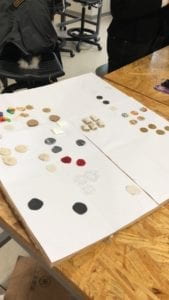
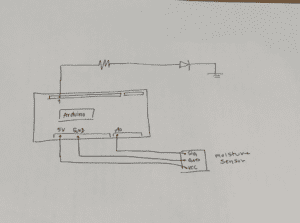
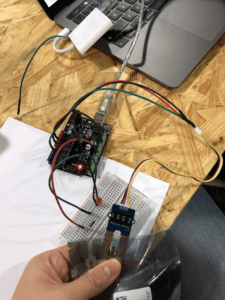
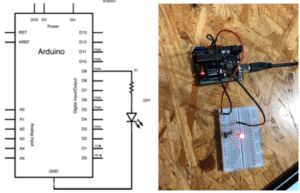
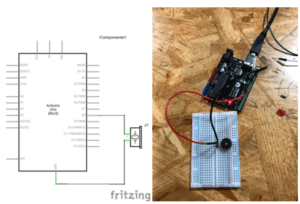
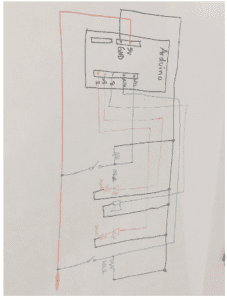
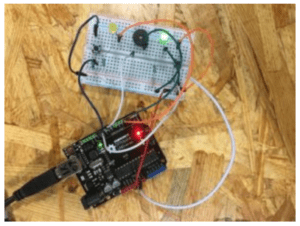
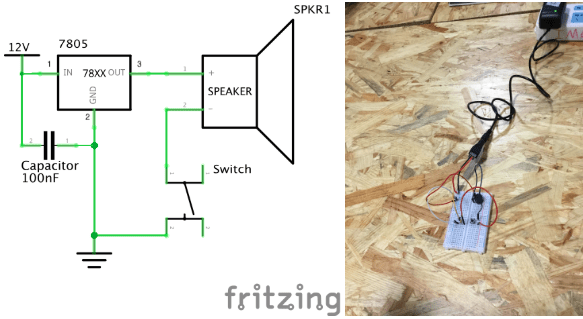 List of Components:
List of Components: 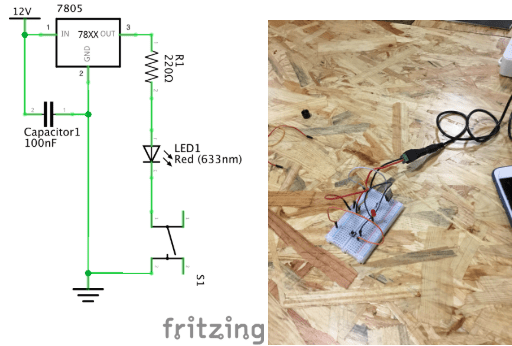
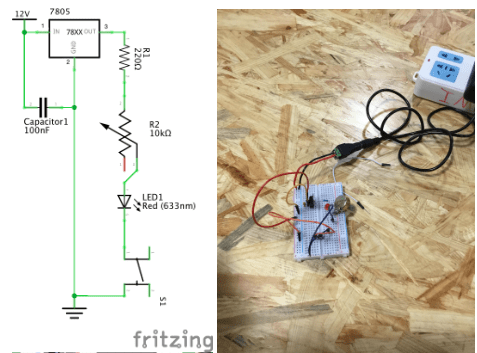 List of Components: Wires, Power cord (12V), Breadboard, Capacitor (100nF), Voltage Regulator 78XX, Switch, Resistor (22 Ohms), LED (633 nm), Potentiometer (10k Ohms)
List of Components: Wires, Power cord (12V), Breadboard, Capacitor (100nF), Voltage Regulator 78XX, Switch, Resistor (22 Ohms), LED (633 nm), Potentiometer (10k Ohms)